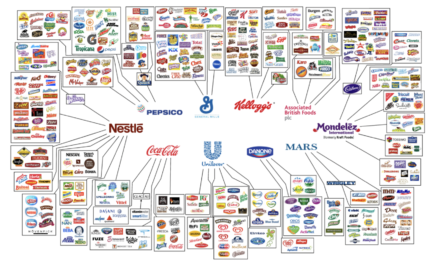By Walden Bello
(Speech delivered at the debate on patents, drug development, and HIV/AIDS at the XV International AIDS Conference, Bangkok, July 14, 2004.)
Estimates on the accelerating rate of HIV infection underline the scale of the public health problem that confronts the world. Clearly, we need the equivalent of the World War II Manhattan Project to deal with HIV/AIDS, one that will, unlike the original Manhattan Project, be life-preserving instead of death-dealing. All actors—government, business, civil society, the medical community—need to be drawn into one massive coordinated effort.
Many people, however, increasingly have questions about one key group: the pharmaceutical companies or, as it is called in business circles, “Big Pharma.” More and more people have asked the question: Is Big Pharma part of the problem of part of the solution?
Corporate Obstructionism
While the UN and other agencies have been working with governments in Africa, Latin America, and Brazil overtime to stem the tide, what has Big Pharma been up to?
Well, from 1999 to 2001, it sought to get the US government to use mechanisms like a cut-off of aid to pressure South Africa to overturn its new law on compulsory licensing that would allow the manufacture of cheap anti-retroviral (ARV) drugs. It also threatened to sue the South African government for infringing on patent rights. It even used then Vice President Al Gore to pressure South African President Thabo Mbeki on the issue.
When the Fourth Ministerial Meeting of the World Trade Organization (WTO) adopted, in November 2001, a declaration that public health concerns overrode intellectual property rights, Big Pharma spent the next two years trying to undermine the agreement by pressuring countries to attach onerous conditions to the sale of essential drugs by developing countries with drug manufacturing capacity to those without it.
When it comes to HIV-AIDS, Big Pharma is less concerned about saving lives and much more concerned about protecting its patents and advancing its interpretation of the Trade-related Intellectual Property Rights (TRIPs) agreement as restricting compulsory licensing, preventing export of drugs produced under compulsory licensing, and banning parallel imports.
What is behind this callous attitude? Well, Big Pharma’s rationale goes this way: Without the very broad protection it wants for its patents, without the superprofits it derives from patent protection, there would be no research and development (R&D), no innovation, and thus more and more people would die from AIDS and other deadly diseases.
So when you learn from the World Health Organization (WHO) that most patented medicines retail at 20 to 100 times their cost of manufacture, don’t get mad: Remember that this is not about market pricing but monopoly pricing to support continuing R&D.
Myths and Realities
Big Pharma’s position on the necessity and efficiency of corporate R&D is based on a number of myths and outright distortions. Let us look closely at some of these.
Big Pharma tries to project the fact that it is its efforts alone that are key to drug development, and this is why we should accept its monopoly pricing of drugs. Typical of this was the claim of Burroughs Wellcome (now part of Glaxo Wellcome) that it discovered azidothymidine (AZT). In fact, it was the staff of the publicly funded National Cancer Institute of the US working with Duke University researchers that did it. Big Pharma boasts it is currently developing 73 AIDS drugs. Look more closely, and you will find that most of the firms doing this research are in fact receiving substantial government aid via publicly funded researchers with the National Institutes of Health! In other words, Big Pharma says it is doing R&D, but it actually is siphoning off taxpayers’ money for much R&D on essential, life-saving drugs.
Big Pharma says strict patent protection is necessary because it takes $500 million to bring a single drug to market. As a prominent expert on the drug industry, Merrill Goozner, points out, this is a bogus figure for various reasons–not least of which is the fact that most of the so-called new drugs are not innovations. Indeed, in excess of 40 per cent of the industry’s R&D is aimed at producing minor variations of existing drugs, not at turning out new ones.
Also, much of the alleged cost of drug development is accounted for by marketing expenditures designed to convince people to buy different versions of the same drug. The fastest growing sector of Big Pharma is the marketing sector, not R&D. There are now 90,000 sales people in the industry whose role is to pester doctors to recommend them to patients, with Pfizer alone accounting for 11,000 of these foot-soldiers. $12 billion of corporate expenditures, according to the Toronto Stat, now goes to maintaining and expanding this non-essential layer in the form of wages and salaries.
A third cost, which is factored into the $500 million figure, is the massive salaries of the top executive layers of the different drug corporations—a point to which we shall return.
Big Pharma makes a 20 per cent return on investment, making it the most profitable industry in the US. Yet even as its profits leap upward, the productivity of the industry has plummeted. In 1996, the US Food and Drug Administration (FDA) approved 53 new drugs. Last year, it approved just 17. Increasingly, according to the Toronto Star, “Big Pharma doesn’t invent drugs. It licenses them from smaller firms around the world, or buys them outright by acquiring the firms that hold the rights, passing along the high takeover costs to consumers.” Drug consumers all over the world bore the burden, in the form of higher drug prices, of Pfizer’s recent acquisition of Warner Lambert and Pharmacia Corporation. Not innovation but making variations of the same drug or medicine or treatment is what the industry is settling into, which is why it must hold on tightly to existing patents, whether it is in HIV AIDS drugs or in tropical disease treatment drugs, or cancer drugs. It is, in short, turning into a rentier class.
Why Corporate R&D is not the Answer
As everybody knows, even with compulsory licensing, HIV-AIDS treatment costs are still too high relative to the resources of patients and governments. Bringing down treatment costs to $200 a year will not be enough since at that price many millions of poor people will still be priced out of the market. We desperately need R&D breakthroughs to come out with affordable drugs. But to expect this from an increasingly sclerotic industry that is marked by a rentier mentality is maybe unrealistic.
But there is a more basic question: Does the industry really have an interest in developing drugs for which there is great need but from which one can derive little profit? Well, the answer is no. Despite the fact that tropical diseases were the main killers of the world’s peoples, only 13 of 1233 new drugs that reached the market between 1975 and 1997 were approved specifically for tropical diseases. There was simply no market to support R&D in this area. I would venture to suggest that for Big Pharma, the market constituted by the millions of people suffering from HIV/AIDS in Africa, South Asia, and Southeast Asia simply pales in comparison to the market for rich peoples’ diseases in the North. Profits determine corporate R&D, not human needs.
It must be pointed out that it is not only HIV/AIDS groups that are up in arms against Big Pharma’s regimes of monopoly pricing. Indeed, there is strong and vocal resistance in both the North and South. In the United States, for instance, senior citizens’ demands for lower prices have become so strong that Republicans in Congress are spearheading legislation to legalize import of drugs from Canada that are priced much lower than those put out by Big Pharma. Not surprisingly, Big Pharma has opposed this legislation, raising the bugaboo that these imported drugs are “unsafe”—a familiar charge that they have tossed around in the case of cheap generic HIV/AIDS drugs.
Why We Need a new R&D Paradigm
Herein lies the reason why, despite all the humanitarian pleading on the part of NGO’s, Big Pharma refuses to abandon its hard stance against loosening patents for HIV/AIDS drugs. This rentier industry (Is this a contradiction in terms?) worries that concessions in this area would undermine its whole structure of monopoly pricing based on TRIPS, leading to its eventual collapse and the end of corporate superprofits.
Now I have no problem with giving Big Pharma 20 or 30 years of strict patent rights to Viagra and other chemical toys to enable 70 year old white men and women to have another fling. But essential drugs to save millions and millions of lives, that is another matter. Having been drafted mainly by Big Pharma, the TRIPS Agreement is a rigid and blanket defense of corporate patents that cannot and will not make vital distinctions like this. Which is why corporate R&D protected by the WTO TRIPS agreement is simply an obsolete framework when it comes to the research and development of essential, life-saving drugs.
We need a new R&D framework, based on a people-oriented approach to patents, maybe coordinated by the UN, in which there is room for participation by many other actors, including governments, government institutes, and civil society organizations. This new Manhattan Project can be funded from a Global Fund, the bulk of which could come from a tax imposed on global drug sales. A 1 per cent tax on current global sales of $450 billion, for instance, would create a fund of $4.5 billion.
Executive Pay
But before ending, let me return to the matter of executive pay. Increasingly, more and more resources that could otherwise go to corporate R&D are being funnelled into pay packages for the top layers of the pharmaceutical industry. Here are the total pay packages for the CEO’s of the top five pharmaceutical corporations:
Pfizer: Hank McKinnell, total annual pay package: US$28 million, plus US$30.6 million in unexercised stock options;
Merck: Raymond Gilmartin: US$ 19.5 million, plus $48 million in unexercised stock options;
Bristol Myer Squibb: PR Dolan, US$8.5 million, plus US$3.4 million in unexercised stock options;
Glaxo Smith-Kline: Jean Pierre Garnier, US$11.8 million; and
Du Pont EI: CO Holliday, $US$13.5 million.
Now add the lower but still super salaries of a couple of thousand top executives in the industry, and you will understand why R&D costs have been going through the roof.
These are the very people who have been crying “intellectual property rights” and begrudging the millions and millions of people infected with HIV the radical price reductions that would save their lives.
HIV/AIDS can be licked, but only by undertaking today’s equivalent of a Manhattan Project armed with new R&D paradigm that is not hostage to corporate waste and corporate profits.
*Walden Bello is professor of sociology and public administration at the University of the Philippines and executive director of the Bangkok-based institute Focus on the Global South.









